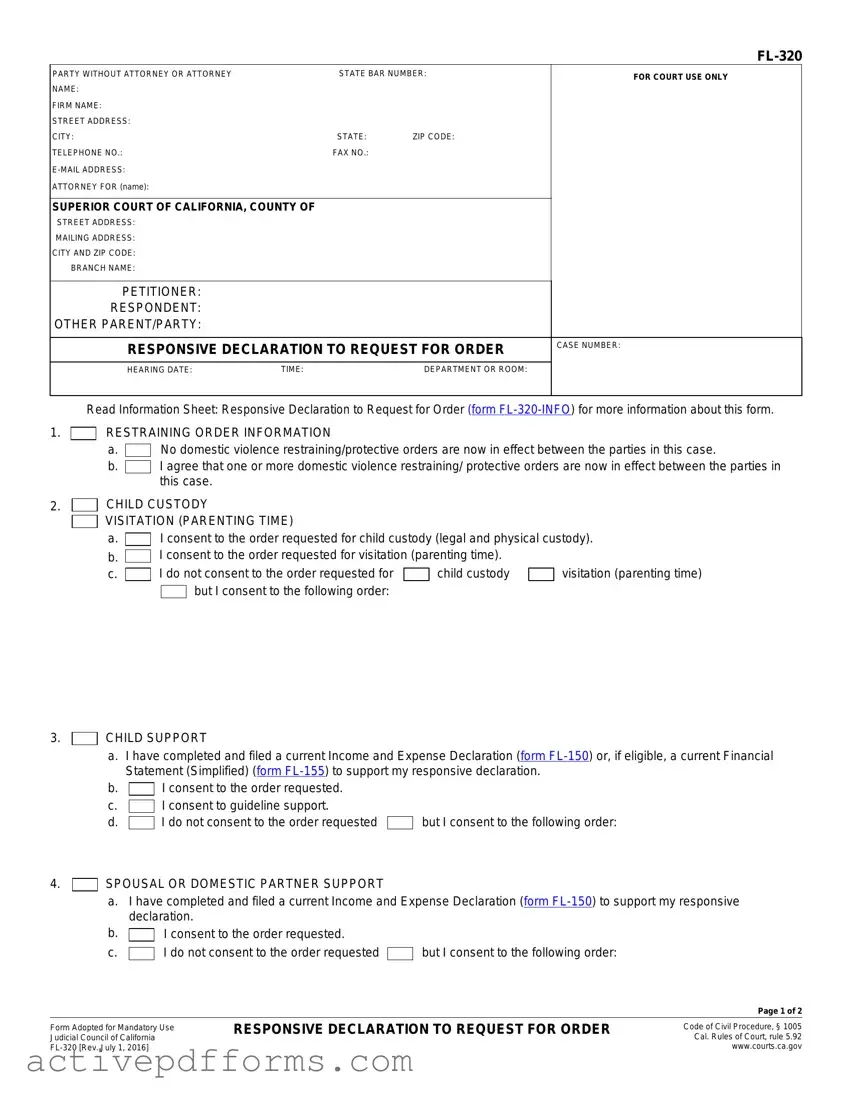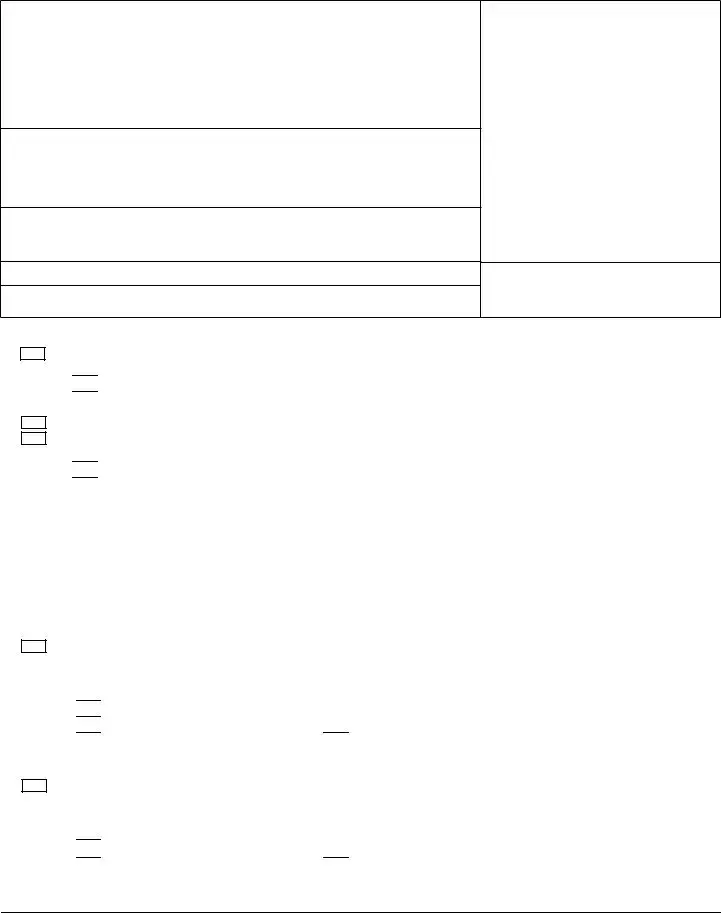What is the FL-320 form used for in California courts?
The FL-320 form, also known as the Responsive Declaration to Request for Order, is utilized in California courts as a formal method for responding to a Request for Order filed by another party. This form allows the responding party to agree with, object to, or suggest alternatives to the orders requested regarding matters like child custody, visitation (parenting time), child and spousal support, domestic violence orders, property control, attorney's fees, and other specific orders.
How do I know if I need to complete the FL-320 form?
If you have been served with a Request for Order (FL-300) in a family law case, and you wish to respond to the requests made in that document, you need to complete the FL-320 form. This is your opportunity to present your side of the matter and any requests you have to the court.
What information do I need to fill out in the FL-320 form?
When completing the FL-320, you're required to provide your personal information and case number, the details of your response to the Request for Order, including your positions on child custody, visitation, support, domestic violence orders, property control, attorney's fees, and other orders sought by the petitioner. Additionally, you must include facts supporting your positions limited to 10 pages unless the court allows more. Finally, your signature certifies that the provided information and attachments are true and correct.
Are there any attachments I should include with my FL-320 form?
Yes, depending on what you are responding to, you may need to include attachments such as a current Income and Expense Declaration (FL-150) or, for attorney's fees, a Supporting Declaration for Attorney’s Fees and Costs (FL-158) if applicable. It's also crucial to attach any factual evidence supporting your responses or requests, keeping in mind the size limit for attachments unless you obtain permission from the court for more.
How do I submit the FL-320 form once I have completed it?
After filling out the FL-320 form, you need to file it with the clerk of the court handling your case. This usually involves bringing or mailing the completed form and any attachments to the court. Remember to also serve a copy to the other party or their attorney, which must be done according to the court's rules on proper service of documents to ensure fairness and legal compliance.
Is there a deadline for submitting the FL-320 form?
Yes, there is a specific timeframe within which you must submit the FL-320. Generally, your Responsive Declaration should be filed and served on the other party at least nine court days before the scheduled hearing, counting from the hearing date back but excluding weekends and legal holidays. However, always check the local court rules or with the court clerk as some jurisdictions may have different requirements.
What happens if I agree with the requests made in the Request for Order?
If you agree with all the requests made in the Request for Order, you can indicate your consent on the FL-320 form. However, it's still important to file the form to officially record your agreement with the court. This helps ensure that the court and the other party are aware of your position and consent, potentially facilitating a smoother process.
What should I do if I need more than 10 pages to provide my facts and attachments with the FL-320 form?
If your response requires more than the allotted 10 pages for facts and attachments, you must request permission from the court to submit additional pages. This is typically done through a written request or motion, explaining why the extra pages are necessary to adequately present your facts and evidence. Approval is at the discretion of the judge managing your case.
Can I withdraw or modify my FL-320 form after submitting it?
Once the FL-320 form has been filed with the court, any changes to it would require you to file an amended version. However, this is subject to the court's approval, and the timing and reasons for the amendment can be factors in whether or not the court allows the change. If you need to withdraw or substantially modify your Responsive Declaration, it's advisable to consult with a legal professional to understand the implications and the proper procedure.


 No domestic violence restraining/protective orders are now in effect between the parties in this case.
No domestic violence restraining/protective orders are now in effect between the parties in this case. I agree that one or more domestic violence restraining/ protective orders are now in effect between the parties in this case.
I agree that one or more domestic violence restraining/ protective orders are now in effect between the parties in this case. I consent to the order requested for child custody (legal and physical custody).
I consent to the order requested for child custody (legal and physical custody). I consent to the order requested for visitation (parenting time).
I consent to the order requested for visitation (parenting time). I consent to the order requested.
I consent to the order requested. I consent to guideline support.
I consent to guideline support.
 I do not consent to the order requested
I do not consent to the order requested 
 but I consent to the following order:
but I consent to the following order: I consent to the order requested.
I consent to the order requested.
 I do not consent to the order requested
I do not consent to the order requested 
 but I consent to the following order:
but I consent to the following order:
 I consent to the order requested.
I consent to the order requested. I consent to the order requested.
I consent to the order requested. I do not consent to the order requested
I do not consent to the order requested I consent to the order requested.
I consent to the order requested. I do not consent to the order requested
I do not consent to the order requested I consent to the order requested.
I consent to the order requested. I do not consent to the order requested
I do not consent to the order requested